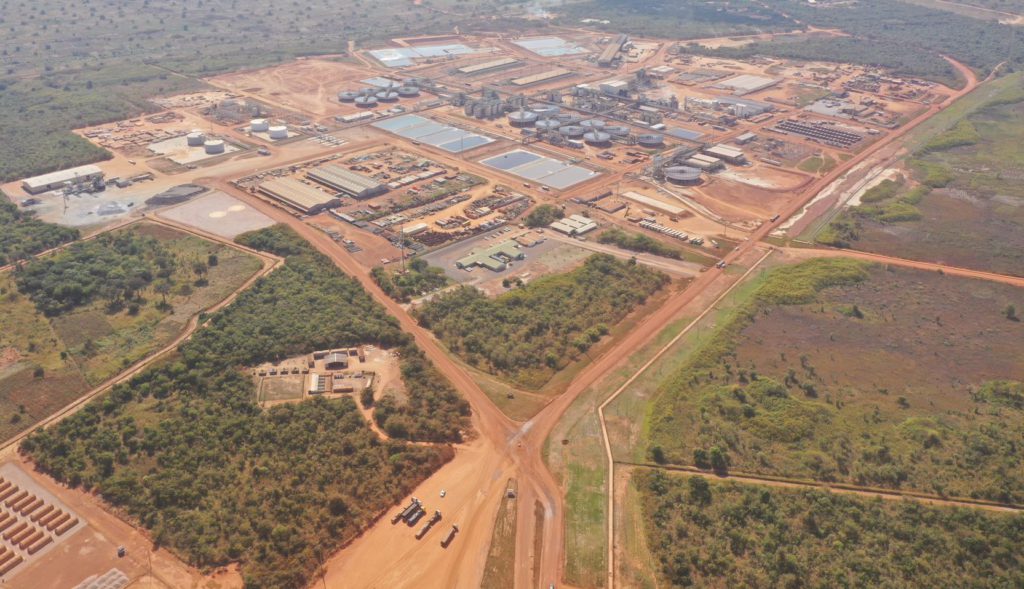One of the first questions is, where are we going to get all the raw material that is needed to satiate demand? There are two main options: extract it from the ground or draw on the existing pool of material currently in circulation. Looking specifically at cobalt and copper, both markets are currently in a state of pronounced deficit, which has persisted since the second half of 2020 amid the stimulus-fuelled recovery from the coronavirus crisis. Logistical bottlenecks have hugely amplified the effect of the supply-demand deficits. Even if the supply-demand fundamentals balance, if the current logistical headwinds prevail, they will prevent material from getting to customers in a timely manner, making the market feel tighter for longer and supporting prices.
There is no question that the number of new cobalt, copper and other battery material mining projects will rise in the coming years, particularly given that many resource-rich regions, such as Africa, are currently underexplored. At Eurasian Resources Group (ERG), we have already ramped up our Metalkol RTR production facility in the Democratic Republic of the Congo (DRC), a tailings reprocessing operation which is now the world’s second largest standalone cobalt producer and a major copper producer.
Role of recycling
However, the catch to new projects is that they generally entail a long lead time of up to 12 years to develop, meaning that supply cannot immediately respond to large spikes in demand. This being the case, recycling will play an ever-growing role in balancing the market and prices. At the moment, only 5% of lithium-ion batteries are recycled, meaning that recycling has great potential in helping meet demand for materials like cobalt, if the regulatory environment, technology and industry members can facilitate it. In fact, high-performance recycling of EV batteries could supply around 10% of battery materials and could account for approximately $10 billion based on current values. Multi-stakeholder collaboration must play a major role in realizing this potential, with improvements needed in many areas including collection processes, policy alignment and processing technology.
Meeting demand for these raw materials is clearly important, but it is also necessary to meet demand in a responsible way. Consumers are becoming increasingly interested in knowing that their products are sustainably sourced, with approximately 69% of consumers worldwide having changed the products and services they use due to climate concerns. For battery metals, and in particular, cobalt, there is going to be additional scrutiny. For example, around 70% of cobalt is produced in the DRC, which is often linked to issues such as child labour and unethical working conditions.
This takes us back to multi-stakeholder action. We need to implement more effective cross-border cooperation across the entire value chain for all critical minerals, with collaboration between upstream and downstream players. The pull factor, created by consumers demanding higher standards from producers, suppliers and manufacturers, has the effect of increasing vertical integration within the supply chain, meaning that raw material end-customers, such as automakers, are becoming ever more involved with ensuring the materials they use are responsibly sourced.
This is already happening through initiatives like the Global Battery Alliance (GBA), the goal of which is to promote a circular, responsible and just battery value chain. The GBA’s 100+ members span mining companies, NGOs, public bodies and automakers, including Tesla, ERG, the OECD, and Volkswagen. The organization recently partnered with a German consortium to launch the “Battery Pass,”” which will provide a solution for securely sharing information and data across the battery value chain, providing the foundations for a new generation of sustainable batteries in Europe.
Blockchain tracing solution
Meanwhile, Re|Source, a blockchain solution to trace responsibly produced cobalt from the mine to the electric vehicle, is another example of the growing trend of vertical integration. Tesla, CMOC, ERG, Glencore (LSE: GLEN) and Umicore are working together to help end-customers assess the ESG performance of the metals they use for batteries. Using blockchain technology, we are tracing responsibly produced battery materials in real operating conditions from the mine to the electric vehicle. The industry may see a “greenium” (green premium) on materials that have been proven to be responsibly sourced, accelerating the greening of the sector by incentivizing more companies to operate in a sustainable way. However, we have to be careful that the rising cost of critical minerals for the energy transition will not lead to “greenflation,” eroding the expected reduction in green premiums achieved through innovation and scale.
With the development of the battery market, there will also be more directions that battery technology will take in the future. More cathode options will of course be developed to meet the strong and growing demand in the EV industry. However, many new alternatives will also require significant amounts of cobalt, particularly battery chemistries with high-nickel intensity, which are currently under development.
We expect lithium iron phosphate (LFP) and NCM (nickel-manganese-cobalt) battery chemistries and their derivatives to dominate the EV battery market in the mid-term future. NCM batteries and their derivatives have great potential for innovation and further improvement, particularly with regards to energy density, as a way of meeting the future expectations of consumers and manufacturers. Conversely, LFP batteries are likely to reach their maximum energy density and peak performance in the next three or four years, meaning there is less room for improvement and further technological advances. We therefore expect NCM batteries to continue to be the preferred choice for high-end EVs in the future, with NCM battery chemistry set to dominate the market with a 64% of market share in 2025.
It is clear that the battery metals market is booming, and the stage is set for demand and prices to continue to rise. However, the mining industry must ensure that these metals are supplied in a responsible and sustainable way. Meeting the supply and demand challenges of battery metals requires innovation, multi-stakeholder action, and an increased focus on recycling alongside new mining projects.
— Benedikt Sobotka is CEO of Eurasian Resources Group (ERG) and Co-Chair of the Global Battery Alliance (GBA).




